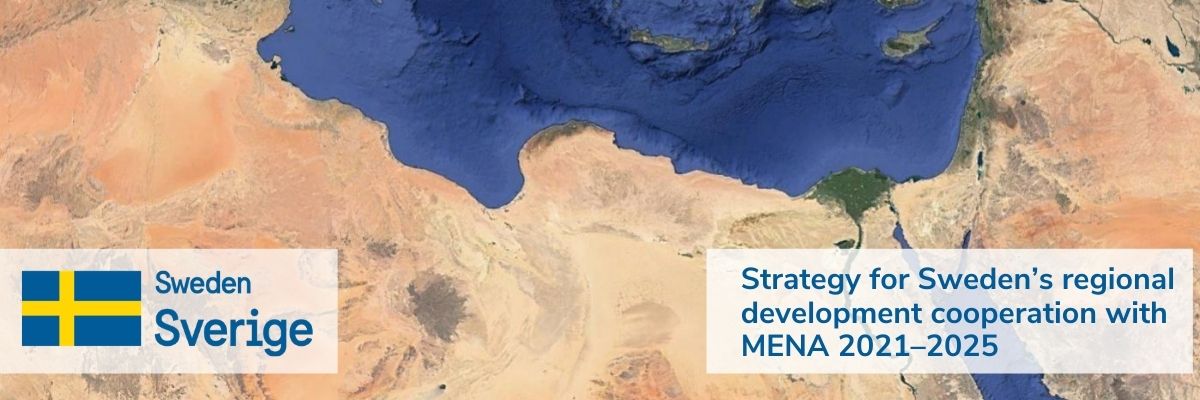
The Swedish Government just launched its Strategy 2021-2025 for regional development cooperation with Middle East and North Africa. With extensive partnerships with governments, institutions and stakeholders already established and a financial commitment of 2.425 billion Swedish Krona, the new 5-year Strategy builds on the results of the previous one, with some adjustments in focus areas as well as adding two new support areas: Yemen and Peaceful & Inclusive Societies. Sweden’s development cooperation is based on the principles of aid and development effectiveness, the 2030 Agenda, the Addis Ababa Action Agenda and the Paris Agreement. Sweden’s feminist foreign policy continues to guide the activities.
- What are the key lessons of Sweden’s previous regional development cooperation in MENA that informed the formulation the new Strategy?
RR: A key lesson is to have a more focused strategy. The new strategy, although having one additional regional sector area compared to the previous strategy, is more focused in terms of how the strategy goals are formulated, helping us to think more strategically in building a portfolio of partners and programs congruent with those goals. For example, the specific goal on Women’s rights and Gender Equality, will force us to elevate the issues in dialogue with our partners and their commitment towards the goal and its ambition as our requirements for reporting at impact level will be elevated.
Another key take away is the overall aim of accountability, which is central to the strategy as a whole. The ambition is to raise the bar for all stakeholders involved by also stressing the need for authorities to be accountable for their priorities, and to actively seek ways for citizens to hold them accountable in a transparent and peaceful manner.
- What could be included in the new Strategy’s priorities on ‘environmentally and climate resilient sustainable development and sustainable use of natural resources’?
RR: Investment in green and blue infrastructure and green-tech transfer are actionable options, also including new forms of finance and inventiveness going forward. Supporting the go-to-market efforts of scalable solutions for the optimization of natural resources (including urban settings) will be key for climate resilient sustainable development. At the same time, designing schemes that facilitate large scale adoption of such innovative solutions (technologies and changes in behavior) will be important for systemic change.
- How may the Strategy’s objectives on ‘peaceful & inclusive societies’ as well as on diversity & gender be best linked with water and climate resilience objectives?
RR: It is important to understand that climate change and environmental degradation affects everyone and constitutes a significant challenge for the MENA region in the long term, with the propensity for increased tension and conflict especially over scarce natural resources. In that vein, it is important that inclusive approaches are fostered across the region to ensure that sustainable and climate resilient solutions are supported, that help to mitigate the impact of climate change in an inclusive way as both a necessity for the region’s conflict prevention efforts as well as its path towards sustainable development.
- With a view to 2025, what are the key ingredients that would make the Strategy successful?
RR: Tapping into citizen’s and organization’s willingness to participate in decision making processes at different spaces and levels (i.e. workplace, businesses, local – national governments) will be important for accountability and increase the chances for demand driven and bottom up reform in the MENA region.
The success of integrating our portfolios and the work that our partners do across sectoral borders will play an important role in ensuring an increased impact of that work in the long run. Even though the strategy is for 5 years, our view when supporting different initiatives must be on a time horizon that is at least twice as long in order not to be lost among all the many different activities that our partners engage in over the time of an implementing year.
While recognizing that development interventions need to be targeted and focused in order to achieve results, it is also important to build upon synergies and lines of effort between different parts of the strategy that are connected. Many of the challenges the region faces are interconnected, and it is important that the work under the strategy is well positioned to make use of this interconnectedness to further development agendas.
